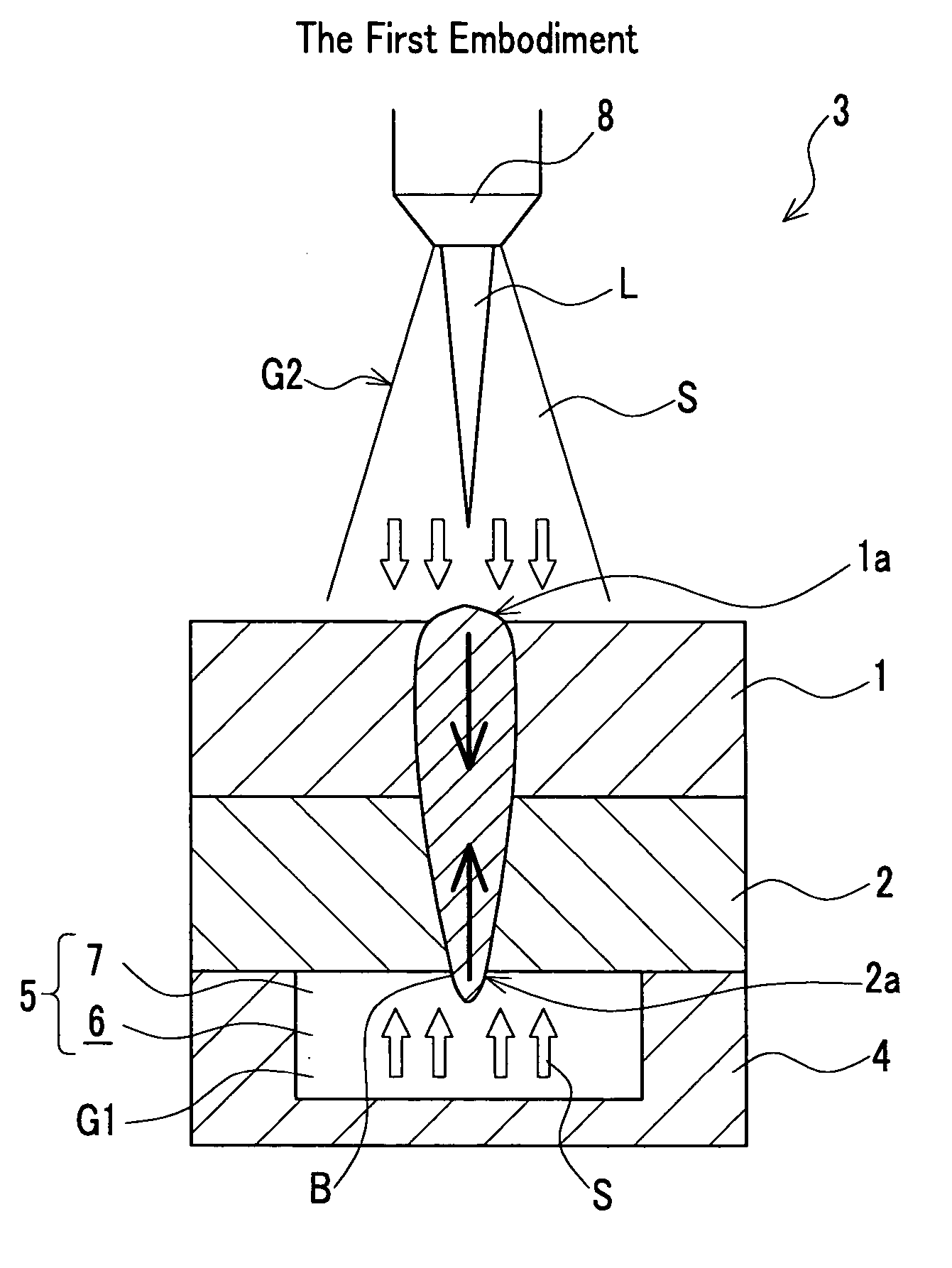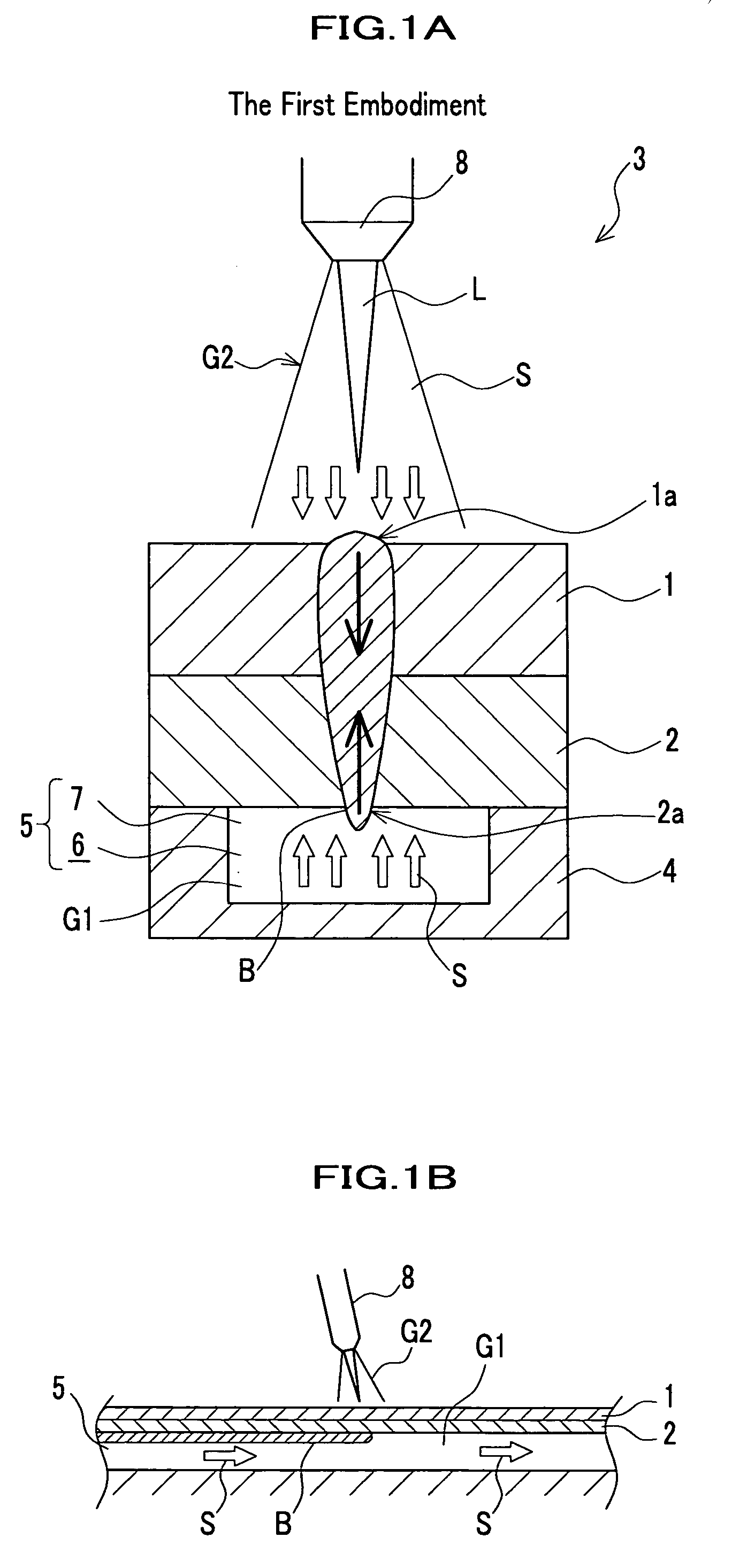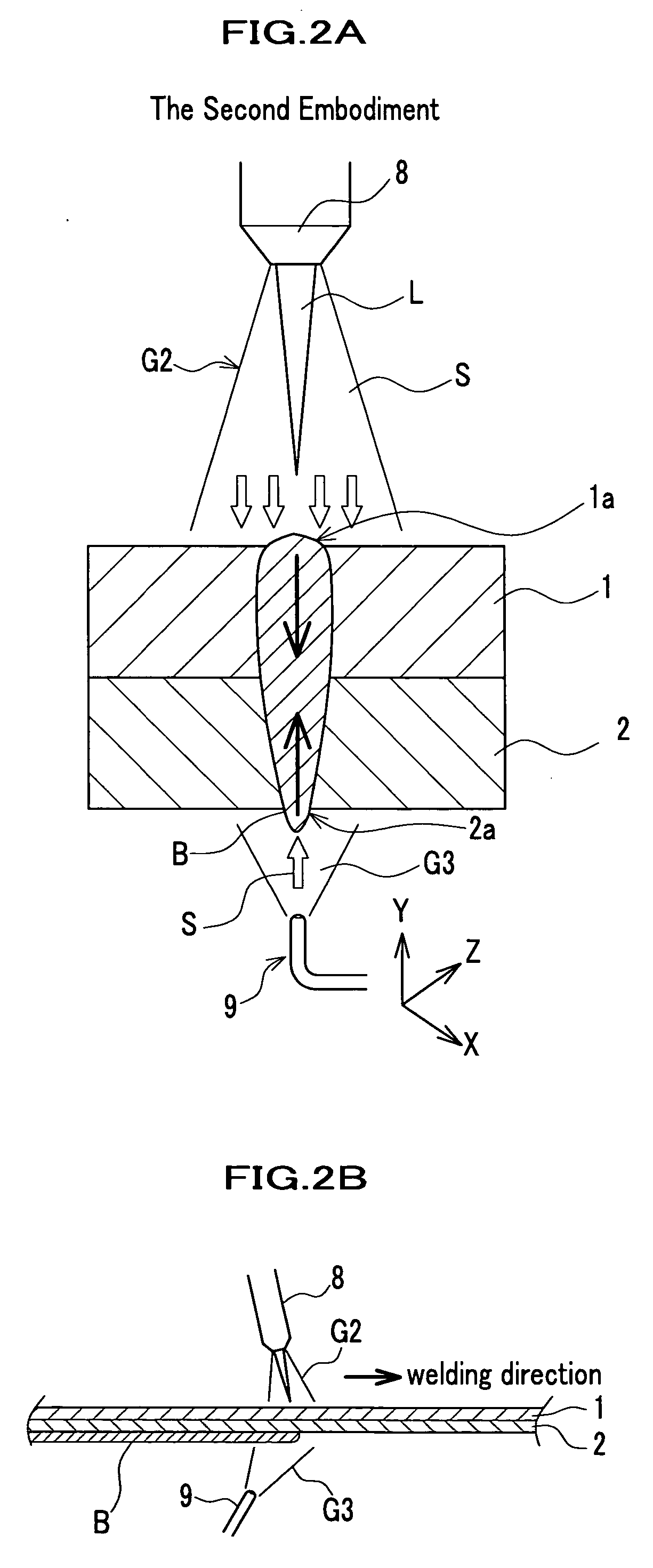Through weld for aluminum or aluminum alloy base metals by using high-density energy beams
a technology of high-density energy beams and base metals, which is applied in the direction of laser beam welding apparatus, welding/soldering/cutting articles, manufacturing tools, etc., can solve the problems of limited application range of this method, the tendency of laser beams to reflect, and the inability to continue continuous welding at the site, etc., to increase the viscosity of melted metal, and reduce the quantity of filler needed
- Summary
- Abstract
- Description
- Claims
- Application Information
AI Technical Summary
Benefits of technology
Problems solved by technology
Method used
Image
Examples
example 1
[0041] FIG. 3 shows the plan views (upper schematics in the fields of columns) and the side views (lower schematics in the fields of columns) of the welded joints regarding to the through weld described in the first embodiment for the cases such that the back-shield gas is supplied, in other words, the shield gas S is blown to the site 2a of the submerged-scar B and the ambience of the shield gas is made and no back-shield gas is supplied, in other words, no shield gas is blown thereto.
[0042] Changing the pairs of the thickness of welding base metals 1 and 2 and the welding speed under the same flow ratio of the shield gas S supplied to the side of the submerged-scar B and that supplied to the laser irradiation side kept constant, the heat input against the welding site la of the upper and the lower welding base metals 1 and 2 per unit time by the laser beam L is reversely proportional to the welding speed. The silver frost like projection T is formed on the surface of the submerged...
example 2
[0043] FIG. 4 shows a cross sectional view of the welded joint regarding to the through weld described in the first embodiment for a case that the gas flow rate of the shield gas supplied onto the laser irradiation side is kept constant and the shield gas S supplied onto the submerged-scar side is varied as 10 1 / min., 25 1 / min. and 40 1 / min. FIG. 5 shows the plan views (upper schematics in the fields of columns) and the side views (lower schematics in the fields of columns) of the welded joint in the same conditions. In order to study the effect of the shield gases for the welded joints against the kind of gases, three inert gases as Ar (argon gas) , N2 (nitrogen gas) and He (helium gas) have been used. For this case, the shield gases have been blown to the submerged-scar B in the upper direction beneath the submerged-scar B. For the purpose of comparison to a nominal condition, a through weld by using compressed air has been carried out.
[0044] As shown in FIG. 4, changing the flow ...
example 3
[0046] FIG. 6 shows a cross sectional view of the welded joint regarding to the through weld described in the second embodiment for the case when the blowing direction of the shield gas S is changed in accordance with the direction of the nozzle against the submerged-scar B.
[0047] As shown in FIG. 6, the projection T is formed on the submerged-scar when no back-shield gas is supplied however the shape of the formation of the projection T changes in accordance with the blowing direction of the shield gas supply against the submerged-scar B.
[0048] In more details to explain, setting the nozzle 9 obliquely upward direction toward the starting point from the ending point on the weld line or toward the ending point from the starting point, then the projections have been sometimes formed on the submerged-scar for the obliquely upward blowing of the shield gas. However, the forming of the projections has been prevented to be formed when the shield gas has been vertically blown beneath the ...
PUM
| Property | Measurement | Unit |
|---|---|---|
| speed | aaaaa | aaaaa |
| energy | aaaaa | aaaaa |
| density | aaaaa | aaaaa |
Abstract
Description
Claims
Application Information
 Login to View More
Login to View More - R&D
- Intellectual Property
- Life Sciences
- Materials
- Tech Scout
- Unparalleled Data Quality
- Higher Quality Content
- 60% Fewer Hallucinations
Browse by: Latest US Patents, China's latest patents, Technical Efficacy Thesaurus, Application Domain, Technology Topic, Popular Technical Reports.
© 2025 PatSnap. All rights reserved.Legal|Privacy policy|Modern Slavery Act Transparency Statement|Sitemap|About US| Contact US: help@patsnap.com



